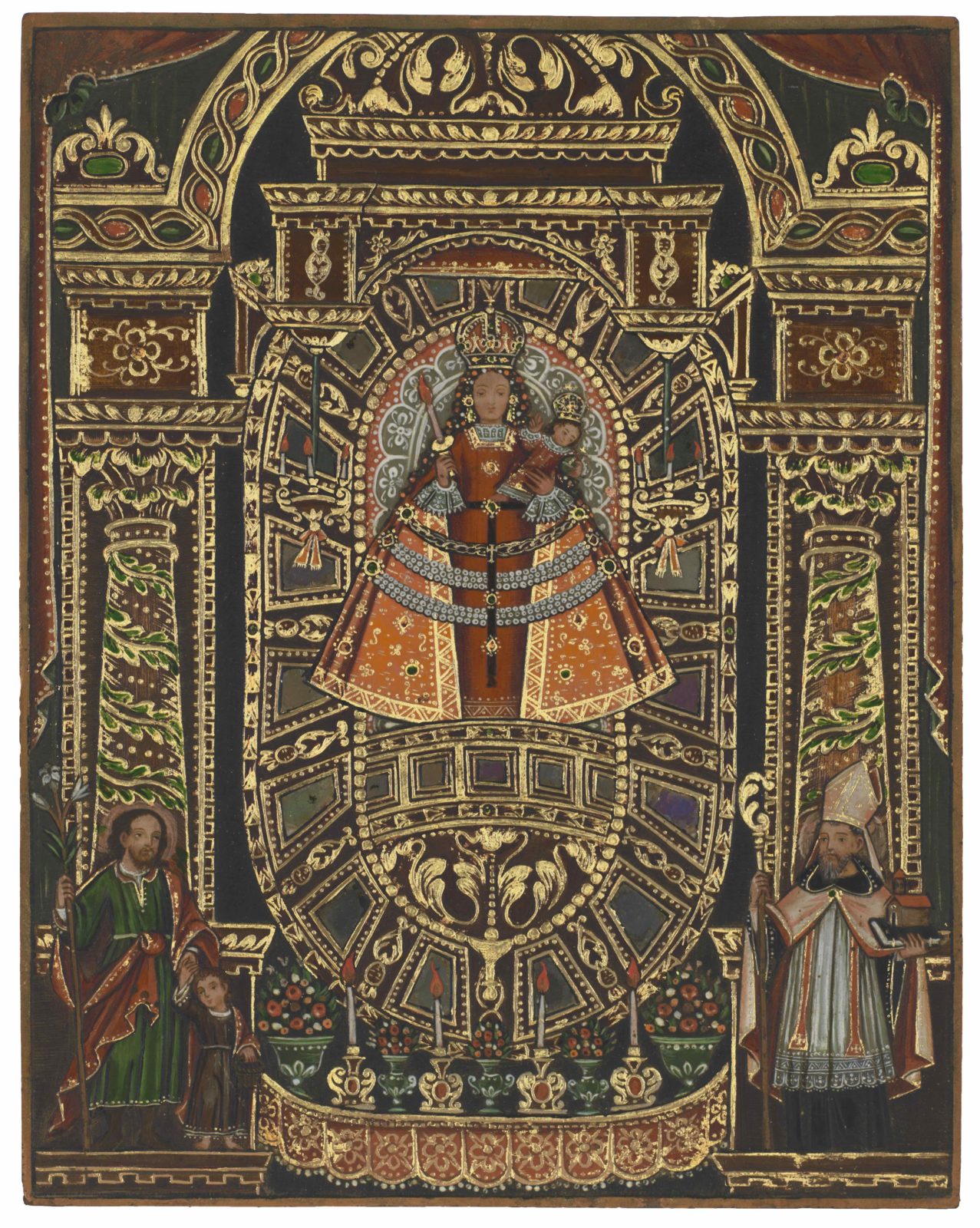
Thoma Foundation receives grant for scientific analysis of Bolivian copper artworks
| August 4, 2021 | |
| Art of the Spanish Americas |
Eight Bolivian copper artworks will soon come out of storage at the Carl & Marilynn Thoma Foundation and go beneath a microscope to help materials scientists unravel the secrets of their unknown origins.
The Center for the Scientific Studies in the Arts — a joint venture of Northwestern University and the Art Institute of Chicago — selected the Thoma Foundation’s works to undergo scientificanalysis, with potential to provide insights into the paintings’ origins, materials, and techniques used in their creation.
The Thoma Foundation’s collections contain more than 175 works from the Spanish Americas, primarily 17th-19th century paintings from South America and the Caribbean. Among the collection are eight oil paintings on embossed, chased and engraved copper thought to originate in the La Paz region of Bolivia. Though made in workshop settings and produced at large scale for export across the South American continent, these artworks are little understood and have received scant scholarly attention.
The partnership between the Thoma Foundation and the Center for the Scientific Studies in the Arts will use advanced imaging techniques, extensive analytical resources, and technical expertise to investigate the works’ facture, palette, and any connections to printmaking and silversmithing, both of which were practiced contemporaneously in Bolivia. The team hopes to answer various questions, including why one work features green enamel, which is not found in any other piece in the collection, and why another work is framed with wood that is one century older than the rest of the piece.
“It is a central mission of the Foundation to support scholarship in the Art of the Spanish Americas, and so it is a particular pleasure for us to receive the scientific support of the team at Northwestern to add to the burgeoning body of knowledge on this art,” said Marilynn Thoma, founder of the Thoma Foundation.
This project builds on the Center of Scientific Studies in the Arts’ recent collaborative efforts with the Museo de Arte de Puerto Rico and the National Museum of Mexican Art in Chicago to examine the pigments used in Latin American and Caribbean art, which have received little attention compared to European art of the same period.
“We aim to be a part of the dialogue that recenters the New World to recognize it as a locale of cultural richness, deep indigenous know-how, and importance,” said Marc Walton, a Northwestern materials scientist, who leads the Center for Scientific Studies in the Arts.
Walton’s team will analyze the works at the Thoma Foundation’s Orange Door facility in Chicago’s West Loop neighborhood during the first two weeks of September. It aims to report its findings next year.
